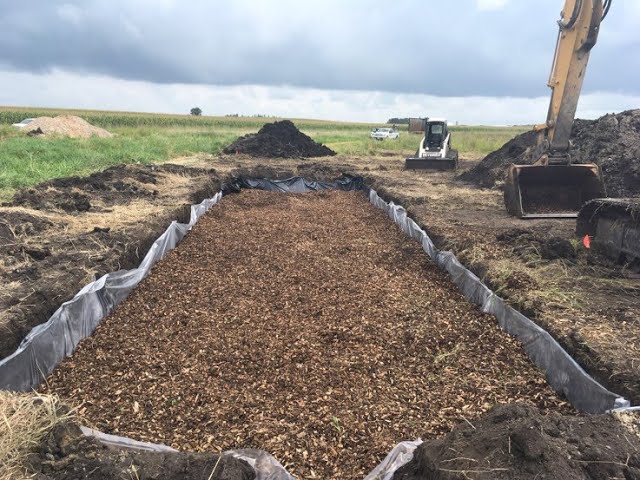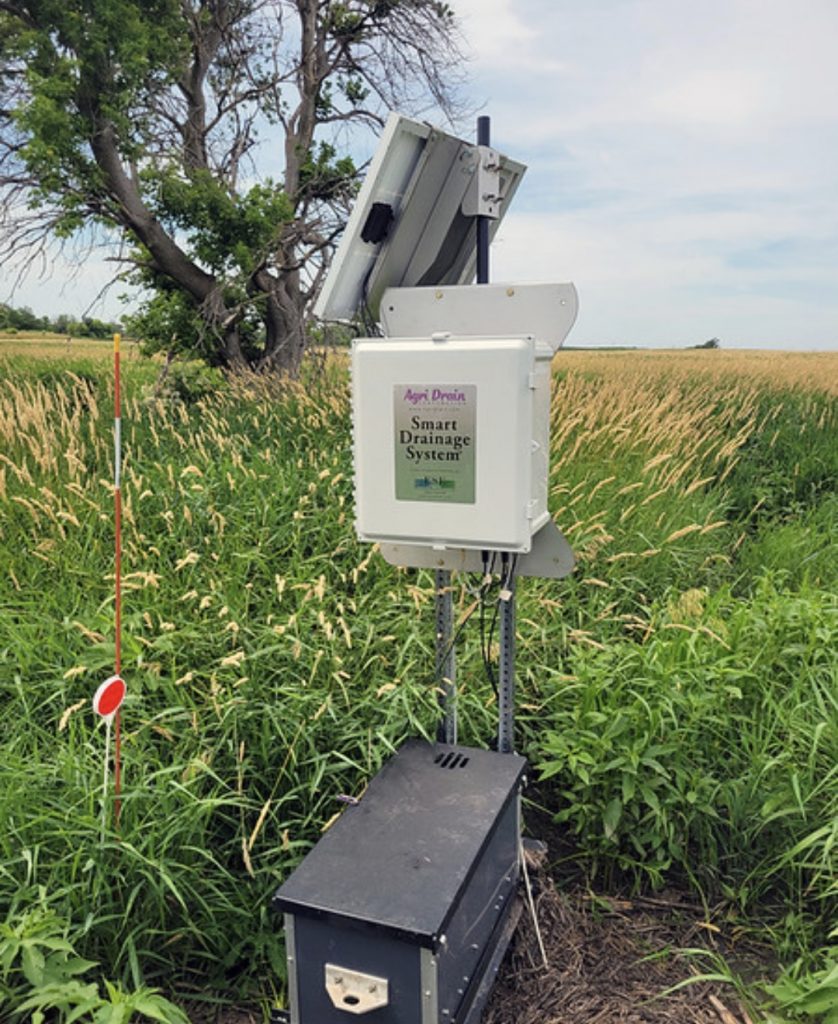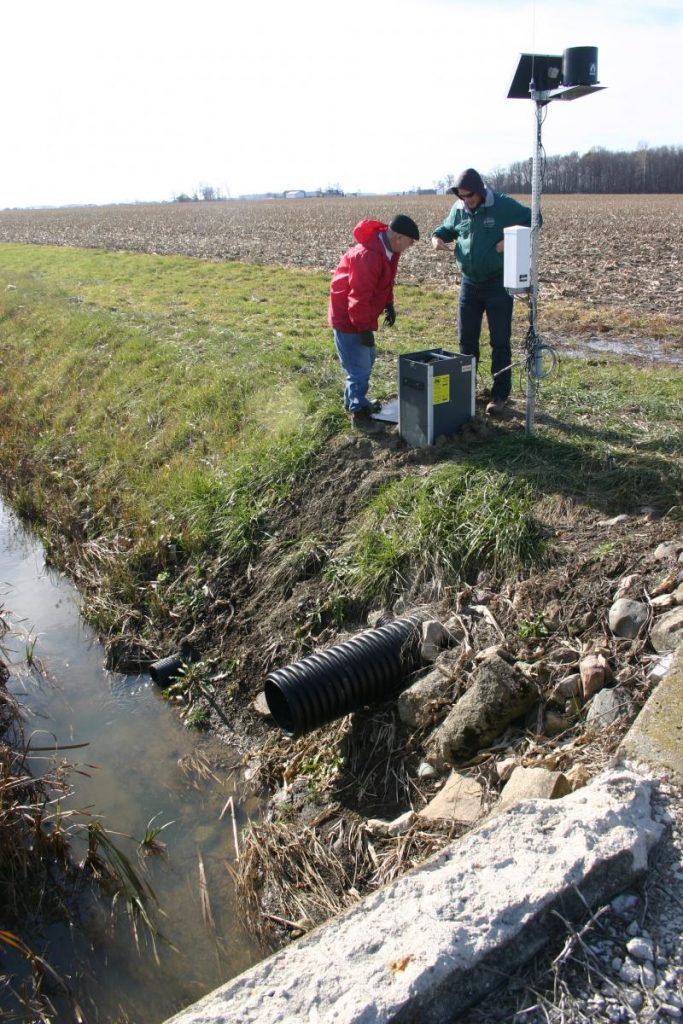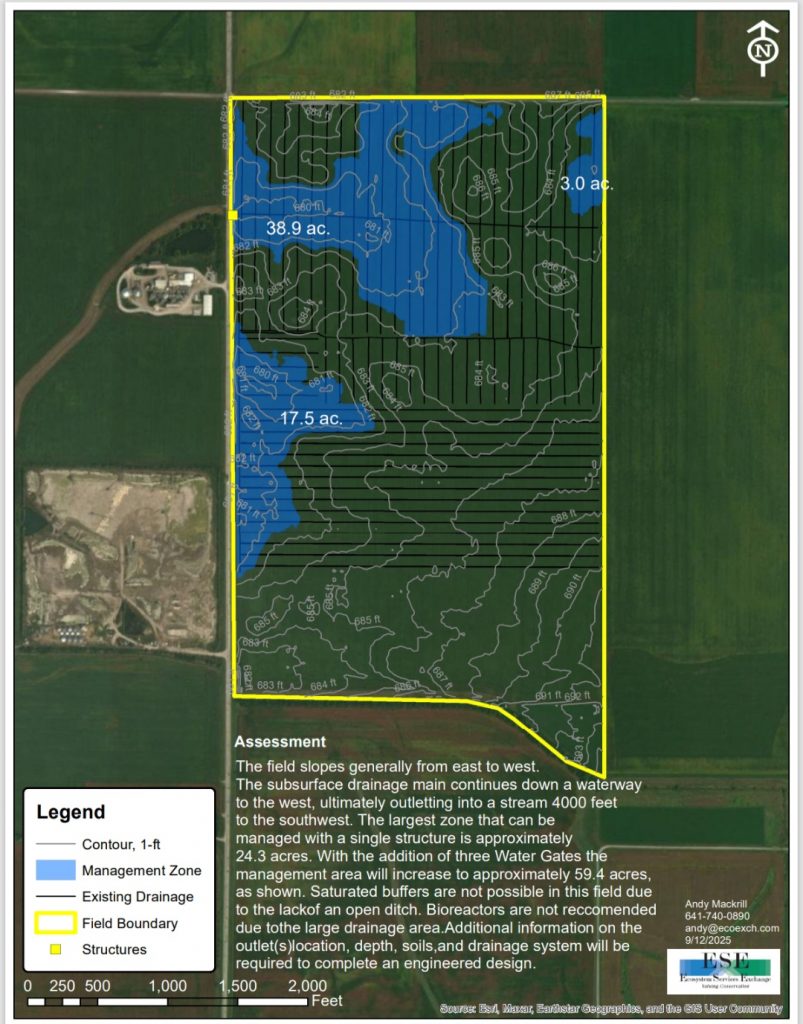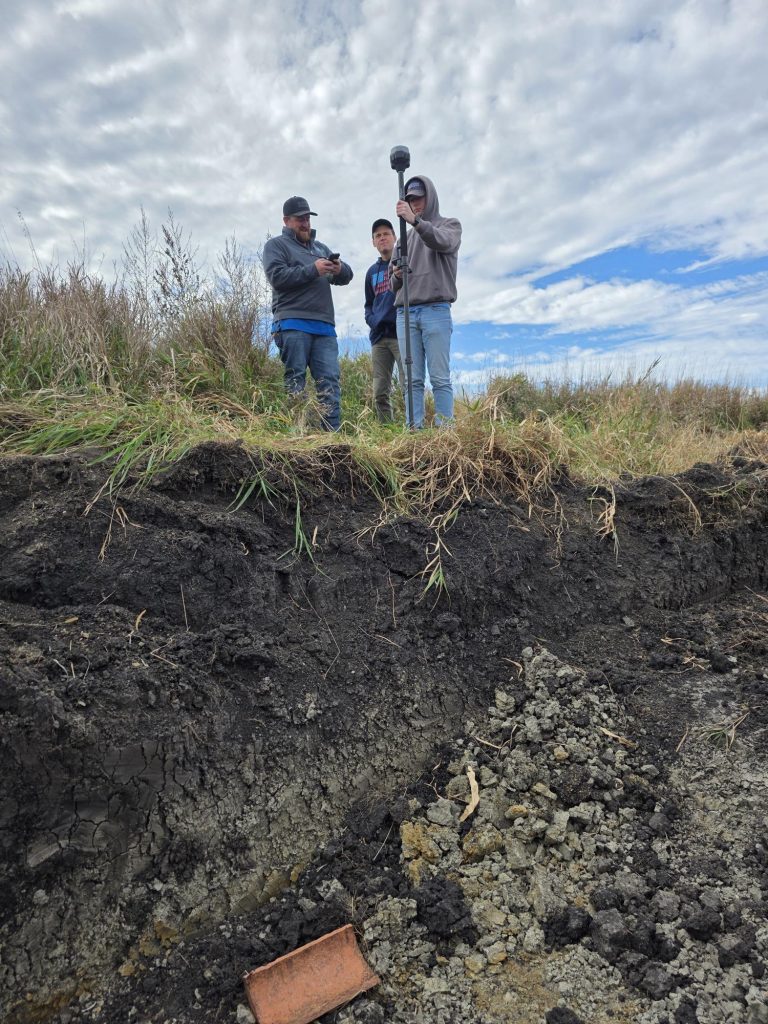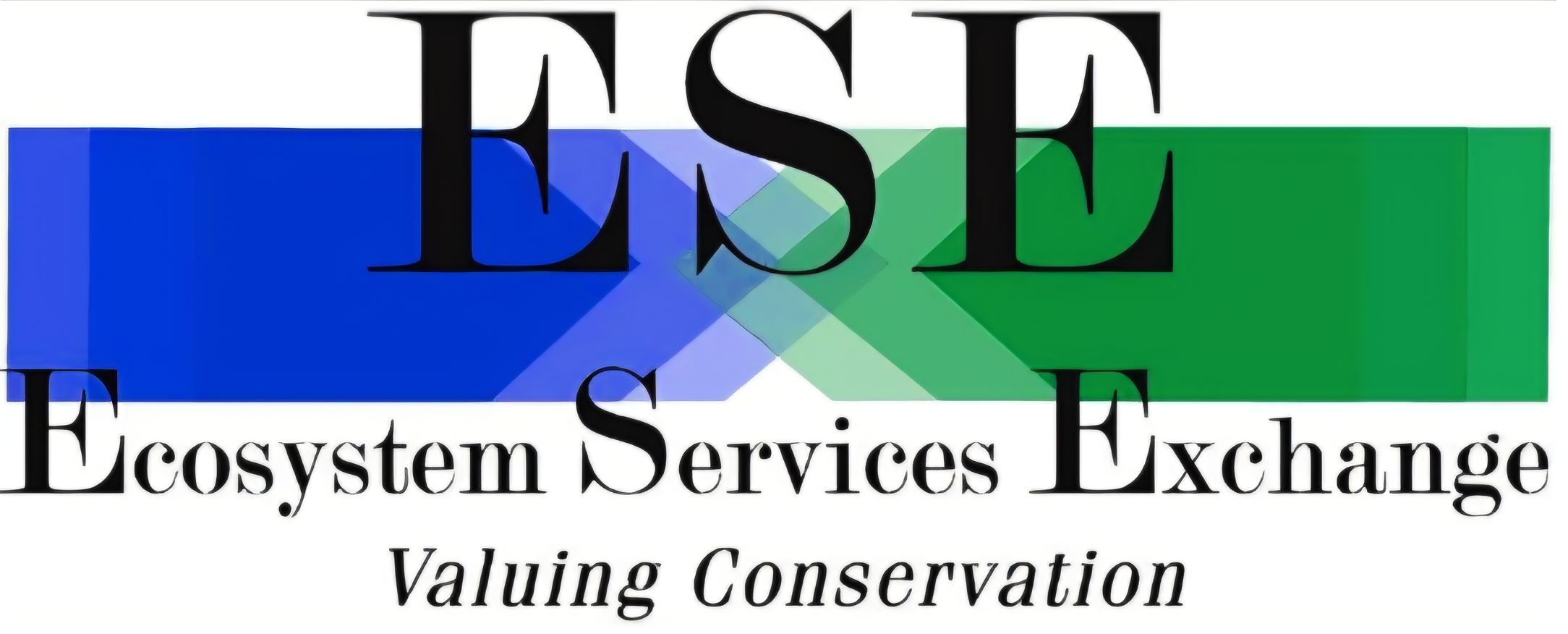Our Services
Let ESE help you finance, design and install conservation drainage practices using state, federal & private financial assistance and qualified local contractors.
Core Technical Services
ESE works directly with ag producers to improve their profitability and environmental performance through the adoption of conservation practices and systems that enable effective use and management of water resources.
It employs highly qualified and experienced technical specialists to determine the feasibility of and carry out the planning, design, installation and oversight of conservation practices and systems that enable producers to optimize their water use.
Optimized use of available water ensures crops receive the right amount, timing and distribution of surface and sub-surface water for crop productivity while also protecting and improving the environment.
ESE’s work is performed by a licensed professional engineer and multiple NRCS-certified Technical Service Providers, who use a site-specific planning/design approach to respond to the unique needs of each agricultural operation.
These technical specialists assist with a wide array of water management conservation practices designed and installed to NRCS conservation practice standards.
ESE also has the expertise to setup and operationalize for the landowner the automation features associated with certain conservation drainage practices that are manufactured and supplied by its sister company, Agri Drain Corp.
ESE's core technical services can be categorized as follows:
Remote Site Assessment for Preliminary Determination of Practice Suitability
A remote site assessment for conservation drainage practices refers to the process of evaluating a location’s potential for implementing practices—without physically visiting the site. Instead, it relies on tools like aerial imagery, satellite data, GIS mapping, and existing soil and hydrology databases to gather insights. ESE typically offers remote site assessments at no cost and as the initial step in the process to determine what practice (or practices) a producer may choose to adopt on a given site.
Key components of a remote site assessment include:
- Land Use & Topography: Analyzing slope, elevation, and land cover to understand water flow and erosion risks.
- Soil Characteristics: Using soil surveys to determine infiltration rates, drainage class, and suitability for conservation drainage practices.
- Hydrologic Features: Identifying nearby streams, wetlands, and depressional areas that influence practice design.
- Existing Infrastructure: Verifying current tile drainage systems, ditches, and outlets.
- Regulatory Considerations: Flagging areas that may require permits because of proximity to protected ecosystems.
Remote site assessments help determine if practices like drainage water management, saturated buffers, denitrifying bioreactors, phosphorus removal structures, blind inlets, and others are feasible and will be beneficial—especially when field access is limited or costly. These assessments also support early planning and prioritization before committing time and resources to on-site surveys and engineering designs.
On-Site Investigation and Topographic Survey for Practice Feasibility Verification and to Support Design
An on-site investigation and topographic survey are detailed, field-based assessments conducted to verify the feasibility of implementing a conservation drainage practice and to gather the necessary data to support its design. It involves a technical expert, experienced with conservation drainage practices, physically visiting the site to:
- Confirm conditions observed during remote assessments.
- Collect measurements and samples (e.g., soil, water, elevation).
- Identify constraints or opportunities that affect design.
- Ensure compliance with environmental and regulatory standards.
Key activities include:
- Topographic Surveying: Mapping elevation, slope, and drainage patterns.
- Soil Sampling & Testing: Determining texture, permeability, and suitability.
- Hydrologic Observations: Measuring water table levels, flow paths, and seasonal variations.
- Infrastructure Mapping: Locating existing utilities, drainage systems, and access points.
- Environmental Assessments: Identifying wetlands, protected habitats, or erosion-prone areas.
It is critical to conduct an on-site investigation and topographic survey before proceeding with the design of a conservation drainage practice because it:
- Validates assumptions made during remote assessments.
- Provides accurate site-specific data for engineering calculations.
- Helps tailor the practice design to actual field and drainage outlet conditions.
- Reduces risk of failure or costly redesigns.
Engineering Design of Feasible Landowner-Selected Practice
After practice selection by the landowner for a site determined to be technically and economically feasible, ESE will prepare an engineering design for the practice.
The design process entails the development of detailed plans and specifications for the selected practice that the landowner has chosen based on site assessments and conservation goals.
ESE’s practice designs are completed to USDA Natural Resources Conservation Service (NRCS) conservation practice standards, which are the accepted industry standard. Adhering to these standards ensures the design is completed based on proven criteria and requirements for construction materials and alignment, plus expected performance and results.
The practice design phase is where ESE’s experienced technical experts (professional/licensed engineer and/or NRCS certified Technical Service Providers) translate the practice standard and site specific investigation information and data into a buildable engineering design that meets conservation and performance expectations and is cost efficient.
Key elements of the engineering design include:
- Site-Specific Plans: Tailored to the land’s topography, soil, hydrology, and existing infrastructure.
- Design Documentation:
- Construction drawings and specifications.
- Cost estimates and materials list.
- Quality assurance and inspection plans.
Operation and Maintenance Plan to Support a Designed Practice
An operation and maintenance (O&M) plan for a conservation drainage practice is a written guide that outlines how to keep the installed system functioning effectively over its intended lifespan. It ensures that the practice continues to deliver conservation benefits—like reduced nutrient loading—while minimizing risks of failure or costly repairs.
Core components of an O&M plan include:
- Practice Description: Identifies the specific drainage practice and its purpose.
- Expected Lifespan: Typically, 10 to 20 years depending on the conservation drainage practice.
- Inspection Schedule:
- Semiannual checks and post-storm inspections.
- Monitoring for sediment buildup, erosion, or structural damage.
- Maintenance Tasks include:
- Clearing debris from inlets, outlets, and control structures.
- Repairing damaged components like pipes, vents, or water control structures.
- Managing vegetation to prevent root intrusion or blockages.
- Addressing rodent or livestock damage promptly.
- Operating Instructions:
- Guidelines for seasonal adjustments (e.g., raising or lowering water levels).
- Procedures for winterization in cold climates.
- Safety & Compliance:
- Adherence to OSHA trench safety during repairs.
- Consideration of environmental and cultural resource concerns.
An O&M Plan for an installed conservation drainage is essential because it:
- Protects the investment made in the practice.
- Ensures continued compliance with NRCS practice standards and conservation goals.
- Helps landowners avoid performance issues and environmental setbacks.
Construction Layout, Oversight of Construction, and Checkout/As-Builts for Practice Installation
Construction Layout
This is the pre-installation phase where the design is translated into physical markers on the ground.
- Purpose: Ensures the conservation drainage practice is installed in the correct location, at proper depth, and with needed alignment.
- Surveying and staking out practice parameters, buffer zones, and other features.
- Marking inlet/outlet locations and control structures.
- Verifying that layout matches approved conservation plans and avoids sensitive areas like wetlands.
- Responsibility: Performed by a member of ESE’s skilled and experienced technical team.
Oversight of Construction
This is the active monitoring phase during installation of the conservation drainage practice.
- Purpose: Ensures the work is done according to specifications and environmental requirements.
- Activities include:
- On-site inspections of trenching, equipment placement, and backfilling.
- Verifying materials (e.g., pipe type, filter fabric, rock) meet design specifications.
- Checking for sediment control, erosion prevention, and proper compaction.
- Addressing field changes or unexpected site conditions.
- Responsibility: Performed by a member of ESE’s skilled and experienced technical team.
Checkout/As-Builts
This is the post-construction phase that documents what was actually built.
- Purpose: Confirms the system was installed correctly and provides a record for future maintenance or upgrades.
- Activities include:
- Surveying installed features and comparing them to the original design.
- Recording elevations, pipe sizes, outlet structures, and drainage areas.
- Completing inspection checklists and certifying compliance with NRCS standards.
- Submitting final documentation (as-built drawings, photos, calculations) for approval.
- Responsibility: Performed by a member of ESE’s skilled and experienced technical team.
Coordination of Land Improvement Contractor Services for Practice Installation
Coordinating land improvement contractor services for conservation drainage practice installation is all about ensuring the right people, equipment, and timing come together to implement the project smoothly and according to plan. Here’s how it typically works under ESE’s leadership:
- Contractor Selection: Identifying qualified contractors with experience in conservation drainage systems like saturated buffers, bioreactors, and/or drainage water management, including coordination with the landowners if he/she has a contractor preference based on prior experience.
- Scheduling: Aligning contractor availability with site readiness, weather conditions, and regulatory timelines.
- Pre-Construction Meetings: Reviewing plans, specifications, and expectations with the contractor to avoid miscommunication.
- Permitting & Compliance: Ensuring contractors understand and follow environmental regulations, permits, and NRCS practice standards.
- Material Procurement: Coordinating delivery of pipes, control structures, filter fabrics, and other components.
- Site Access & Logistics: Managing access routes, staging areas, and safety protocols for equipment and crews.
- Communication: Serving as the liaison between landowners and contractors to resolve issues and keep the project on track.
Who Does It?
- ESE takes the lead in coordination.
- Landowners are involved in approving plans and timelines, and may help with site prep if they desire and have the right equipment.
- Land improvement contractors are employed to use heavy equipment appropriate to the site conditions and practices to assemble and install the needed water management equipment and supporting pipes and other features.
Why It Matters?
- Ensures quality control and adherence to practice design conservation goals.
- Minimizes delays and cost overruns.
- Helps avoid environmental damage or regulatory violations.
- Builds trust and accountability among all parties.
Setup and Support for Automation of Select Conservation Drainage Practices
Setting up and supporting automation for select conservation drainage practices involves integrating smart technologies into traditional water management systems to improve efficiency, reduce nutrient loss, and enhance crop productivity. Key elements of automation setup and support include:
- Installation of Automated Structures: This includes installing solar-powered controllers, sensors, and valves that regulate water flow based on real-time data or pre-established system “set points.”
- System Configuration: Calibrating the system to respond to specific field conditions—like soil moisture, water table levels, and weather forecasts.
- Connectivity Setup: Linking the system to web-based platforms or mobile apps for remote monitoring and control.
- Training & Onboarding: Teaching landowners or farm managers how to operate the system, interpret data, and make informed decisions.
- Troubleshooting & Maintenance: Providing ongoing technical support to ensure the system functions reliably throughout the growing season.
Benefits of Automation
- Water Conservation: Retains moisture during droughts and releases excess during heavy rains.
- Nutrient Management: Reduces nitrogen and phosphorus runoff by controlling drainage timing.
- Labor Savings: Eliminates the need for manual board adjustments in drainage structures.
- Crop Yield Boost: Maintains optimal soil moisture for better plant health and photosynthesis.
Support for Automation of Conservation Drainage Practices?
- ESE specializes in the planning, design, installation, and setup of conservation drainage practices with automation features.
- ESE’s support for automation is performed in partnership with Agri Drain Corporation, the principal manufacturer and supplier of automation for structures for water control used with conservation drainage practices. These automated remote access systems come in several types and many of the key features are licensed to Agri Drain Corporation to manufacture.
